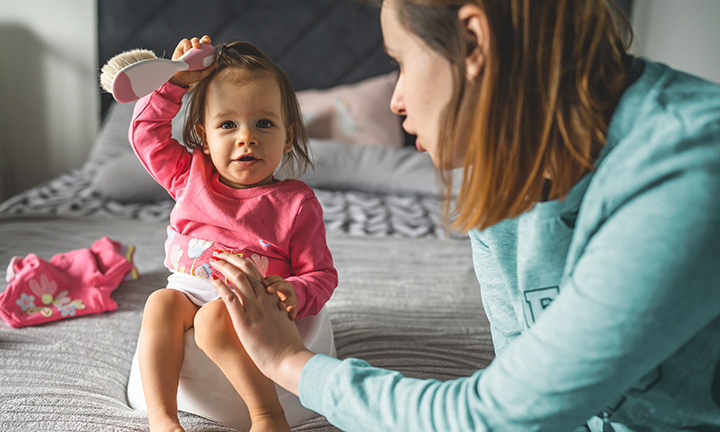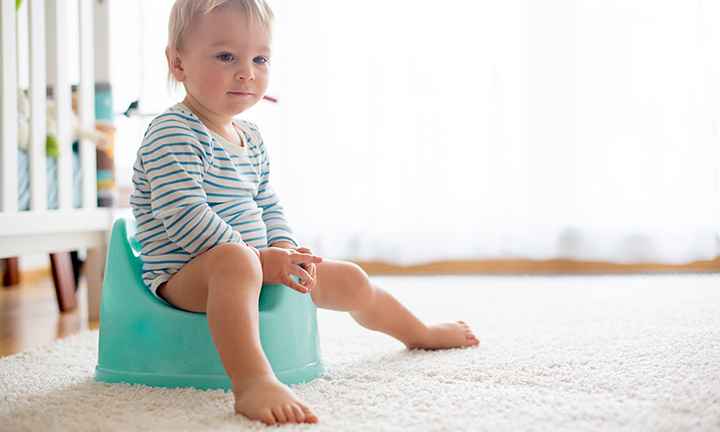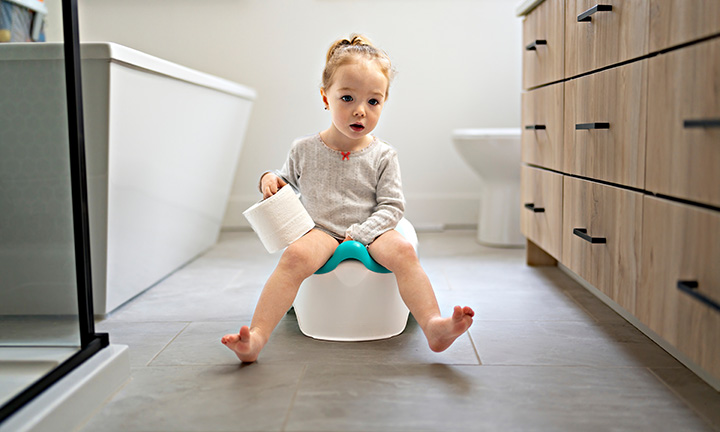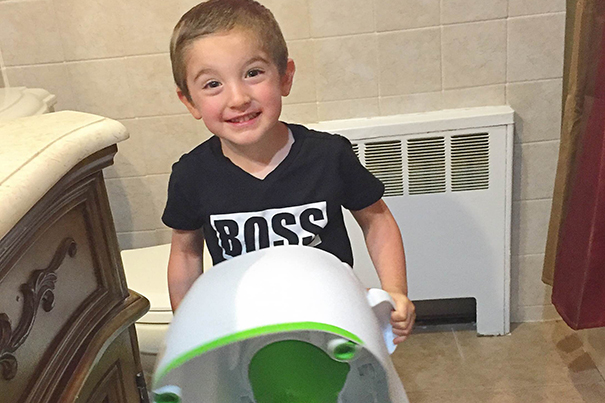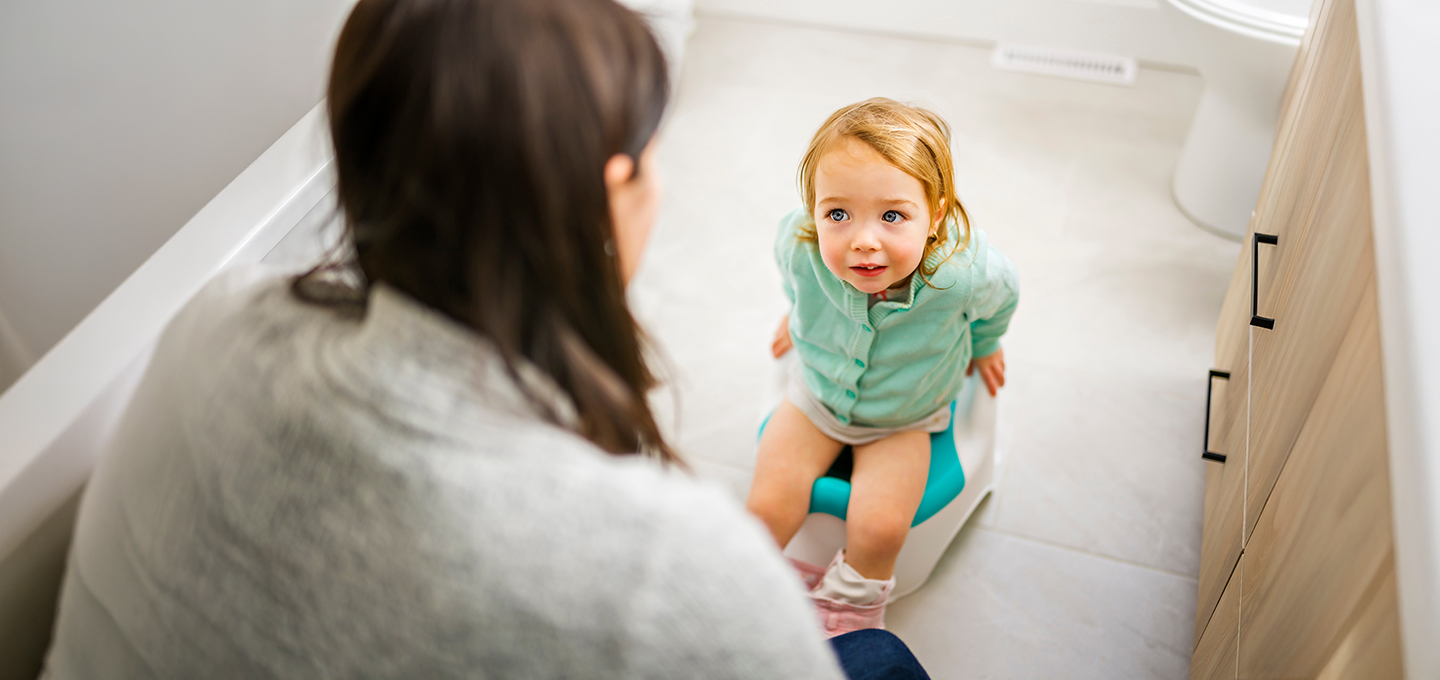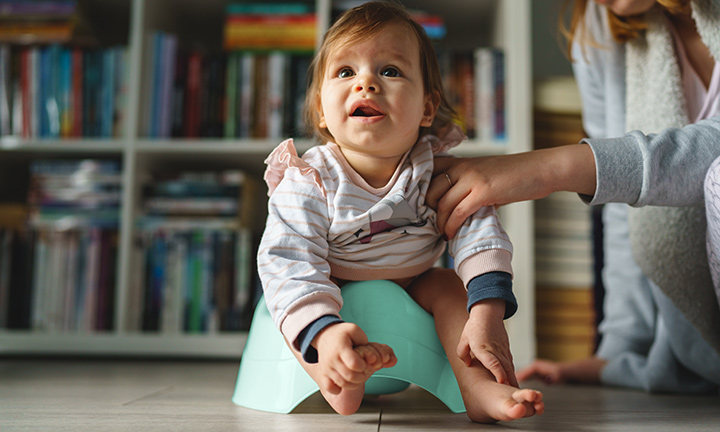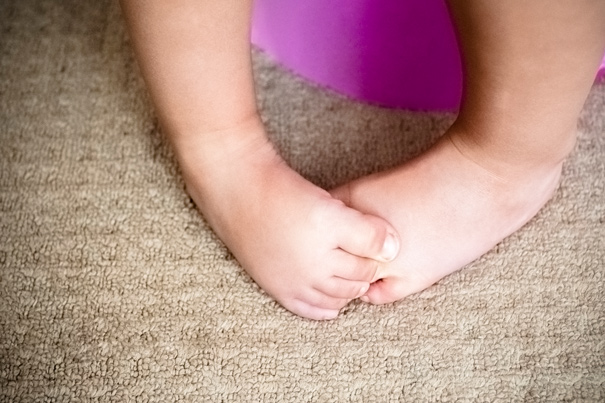
When to Start Potty Training: 7 Signs Your Child Is Ready


When it comes to potty training, and when to start potty training, patience is usually rewarded. Many parents find that the best plan is to wait until their child shows signs of readiness, rather than bowing to pressure from friends or family to jump-start the process too early, or to have their child potty trained by a certain age or deadline.
Read on to discover some of the signs that your little one is getting ready to start potty training, how to prepare your child for potty training, and how to start potty training.
Signs of Readiness for Potty Training
A key point to remember is that there’s no single “right age” for when to potty train — a process that requires your little one to develop a complex set of skills. You know your child best, and you might sense when the time is right. Learning how to use the potty might be easier and go more quickly when your child is at least 2, or even a little older.
In fact, instead of focusing on age, you might find it’s better to look out for the signs that your little one is getting ready to start potty training.
What Are Some Potty Training Readiness Signs?
Here are some signs that your child may be ready to start potty training:
Here are some things that other parents also ask that you’d like to read…
What is the average age to start potty training?
Most children show readiness between 18 and 36 months, though timing varies based on individual development.
How do I know if my toddler is really ready for potty training?
Look for signs like staying dry for at least 2 hours, interest in the toilet, and being able to follow simple instructions.
When Will Your Child Be Ready for Potty Training?
Although early training is possible, studies show that many children who begin potty training before 18 months aren’t completely trained until after the age of 4. In contrast, children who don’t start training until around the age of 2 are likely to be fully potty trained before they turn 3.
Girls tend to be ready to potty train a little earlier than boys, but the readiness signs for both boys and girls are the same.
As you go through all those diapers or disposable training pants before your child is fully potty trained, why not get some great rewards and coupons for your Pampers products? Download the Pampers Rewards app to get started.
Things You Can Do to Prepare Your Toddler for Potty Training
Before you even notice the signs that your child is ready, there are things you can do to get them set for potty training and make it a smooth experience.
Tackling some of these pre-potty training steps will help familiarize your child with the concept of the potty before training begins. It may also make the process less scary and confusing for your child, which in turn may make potty training your little one easier for you.
Here's what you can do to prepare your child for potty training:
Here are some things that other parents also ask that you’d like to read…
Is potty training different for boys and girls?
Readiness signs are the same, but some parents find boys take slightly longer to train on average.
Can I start potty training before age 2?
Yes, if your child shows readiness cues, but pushing too early may cause frustration for both of you.
Do pull-up diapers help with potty training?
Yes, they’re easy to pull on and off, encouraging independence, though some parents prefer switching straight to underwear.
How to Start Potty Training
Once you notice most of the readiness signs discussed earlier, it's a good time to kick off potty training.
Starting with bowel training is a smart move, focusing on when your child is about to do number two. Kids often can't tell peeing apart from pooping since it usually happens together. Once bowel training is established and your child is typically successfully pooping in their potty chair, most children — especially girls — will begin to relate the pooping with peeing and then can start to understand the difference between them.
Because you’ll start potty training with a focus on bowel training, boys usually learn to pee sitting down. However, they can gradually learn to do it standing up. Imitating an older sibling of the same gender or maybe Dad can help him learn. There are also books you could refer to that show how boys can pee standing up.
If you started preparing your child for potty training in advance, you probably already have a potty chair at home.
The First Steps of Potty Training
Once your child is familiar with their potty chair, these are some steps you can take to start potty training:
An important thing to remember is to keep the experience positive and praise your child for all their potty successes. If you can make potty training fun, your little one will have an easier time making this transition.
When to Delay Potty Training
Trust your instincts on whether or not the time is right to launch into potty training. Even if your toddler is showing signs of being ready for potty training, you might want to put off introducing this new skill in the following situations:
Here are some things that other parents also ask that you’d like to read…
What’s the easiest way to begin potty training?
Start with casual introductions to the potty, let your child sit fully clothed at first, and use lots of praise.
How long does potty training usually take?
It can take a few weeks to several months, depending on consistency, the child’s personality, and developmental readiness.
FREQUENTLY ASKED QUESTIONS
Every child is different, and there are various signs of readiness, but a good first sign is when your child starts showing interest in the potty by, for example, asking questions about it. Another sign is when they seem eager to imitate you.
The Bottom Line
Starting potty training can be a great learning experience for your little one if they're ready for this next step towards more independence. Although accidents will happen along the way, staying patient and positive will help your little one learn more quickly and have fewer problems with it. Have fun and good luck!
And don’t forget to download the Pampers Rewards App, which helps you along the way with expert tips, helpful tools, and rewards for the Pampers products you already use.
- KidsHealth: Toilet teaching
- Cleveland Clinic: Best Potty Training Tips
- Book: Caring for your baby and young child birth to age 5, Sixth Edition Paperback – November 2, 2014 by American Academy of Pediatrics (Author)
Read more about Toddler
Related Articles
Join a World of Support
through Pregnancy and Parenthood.
TRACK WITH TOOLS
LEARN WITH EXPERTS
GET REWARDED
